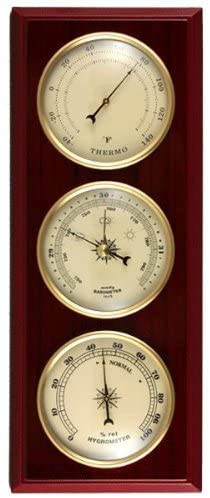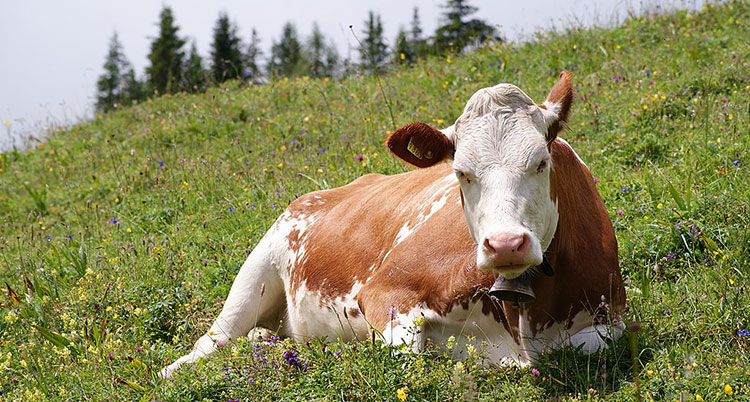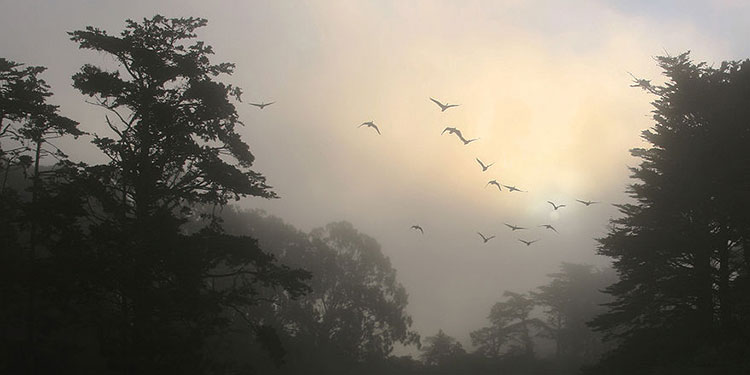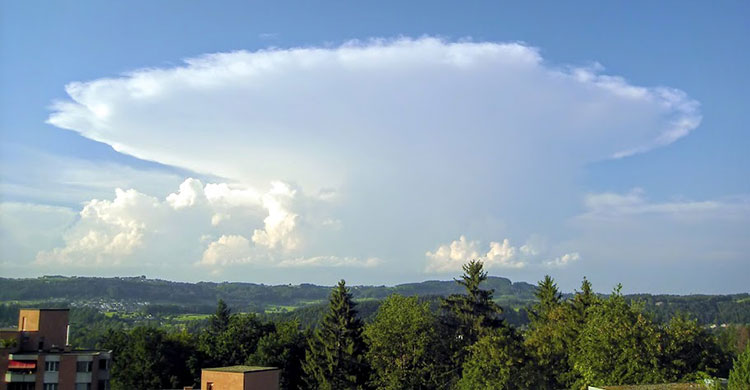How to forecast the weather is a forgotten skill. For millennia, mankind has understood the importance of predicting the weather with some degree of accuracy in order to stay safe, plan the day, know when to harvest crops, know when to safely navigate, hunt game, and more.
by Aden Tate, contributing writer
If we, as preppers, see danger coming down the pipeline in any form of electric grid-destroying way, the evening weatherman and the weather apps on our phones will cease to give us the forecasts we might need in order to plan our course of actions. Following the tips we are outlining below will give you a skeleton of knowledge to have a few ideas on what might be coming for weather changes at least in the short term.
So, what are some of the ways that preppers can predict the weather? Let’s take a look…
1. Buy a Good Weather Thermometer (or two or three)
It should go without saying that your first step to knowing and predicting the weather is to have a decent thermometer or two. A thermometer makes the difference between being able to say “it’s cold” versus “it’s 30 degrees and declining.” Before the modern days of mobile phones, it was quite common to have an outdoor thermometer attached just outside the kitchen sink window. Doing this today will make you more aware of what is happening outside.

High-end and grid-up recommendation: Newentor Weather Station Wireless Indoor Outdoor Thermometer with Atomic Clock and Forecast Station
Inexpensive grid-down recommendation: Taylor Indoor/Outdoor Thermometer
Alternatively, to save money on both a thermometer and a barometer, get the ambient weather traditional weather station recommended below in the barometer section. It’s visually attractive and grid-down.
Small and simple bug out recommendation: Sun Company Glow-in-the-Dark Zipper Thermometer for Jackets, Packs, and Parkas
2. But a Good Barometer (or two or three)
The household thermometer is still relatively common. Far less common is a good barometer. This is when you begin to move into being an observer to becoming a forecaster. Wise deer hunters always keep a barometer at deer camp, the same as anyone with a bug out location should have one there as well. When the barometer is on the move, wildlife are, too. A moving barometric pressure means weather changes are underway.
Classic but reliable grid-down recommendation: Ambient Weather Traditional Weather Station
Small and simple bug out recommendation: Trac Outdoors Fishing Barometer
3. Observe the Cows
Cows lying down in the field means rain is coming.

Keep this in your head when you drive the backroads in your area and you will soon find it to be true. Animals are not only smart but are able to sense things that we humans cannot. Should you drive by a field during the daytime and find that most of the cows in it are lying down in the grass, odds are that there’s a storm coming.
4. Observe the Geese
When the geese honk high, the weather is going to be good. When the geese honk low, the weather will be bad.

Geese fly higher in the sky when the weather is going to be nicer due to their searching out the air with the optimum density for flight. If you see geese flying low, the barometric pressure is indicative of an approaching storm (source).
5. Observe the Dew
When the dew is on the grass, rain will never come to pass.
Dew is indicative of good weather. Moist and humid atmospheres (which are perfect for rain) keep dew from forming on grass by heating it up (source).
6. Look at the Moon
Clear moon, frost soon.

A clear moon without any cloud cover means that there is no “blanket” holding in the warmth of the ground’s radiated air. As such, you can expect a rather chilly morning the next day. It would be a good time to cover your seedlings in spring if you see such a sign (source).
7. Observe the Wind
When the wind is in the east, it’s good for neither man nor beast. When the wind is in the north, the old folks should not venture forth. When the wind is in the south, it blows the bait into the fish’s mouth. When the wind is in the west, it is of all winds the best.
Winds blowing from the east are indicative of bad weather because of a low-pressure system moving through. A northern wind will bring colder northern weather, a southern wind will bring humid and warm air, and a western wind will bring dry air.
8. Look at the Clouds
Note any clouds that are moving against the direction of the wind. When clouds do this, it is because of something called wind shear. The air at high altitudes is moving in a different direction than the air at low altitudes. This is often a sign of impending storms, or even a potential hurricane.
The higher the clouds, the finer the weather. Cumulus, stratus, and nimbostratus clouds – all of which are low altitude clouds – are often a harbinger of rain and storms.

When clouds appear like towers, the earth’s refreshed by frequent showers. This is because cumulonimbus clouds (the ones that form gigantic anvils) pretty much guarantee that a thunderstorm is on its way.
9. Listen to Achy Old People
Old people with arthritis or an old joint injury can often be the first to tell you that a storm is on its way. Listen to them – they know. The change in barometric pressure can interfere with the pressure on the joint, causing extra stiffness and pain.
10. Look at the Leaves
If you notice that the majority of the leaves on trees you see around you are flipped upside down, showing their pale green undersides to the sky, then odds are that there’s a storm headed your way.
11. Look at the Sky
Red sky at night, sailor’s delight. Red sky at morning, sailors take warning.

An oft quoted proverb, a red sky seen at night is indicative of pleasant weather ahead. A red sky at morning means a storm within the next 12-24 hours. Keep in mind that this proverb only applies if the sky is red in the opposite direction of the sunset or sunrise (source).
Further Reading
Reading the weather is an important skill that you should add to your prepper’s mental toolkit. Not only can it help you determine what activities your family needs to plan that day (e.g. planting the garden, staying put, continuing to travel, , etc.), but it can very easily save your life as well.
To become more adept at becoming your own weatherman, consider these books:
- Reading Weather: The Field Guide to Forecasting the Weather (Falcon Guides)
- The Lost Art of Reading Nature’s Signs: Use Outdoor Clues to Find Your Way, Predict the Weather, Locate Water, Track Animals – and Other Forgotten Skills (Natural Navigation)
- Reading the Clouds: How You Can Forecast the Weather
Do you have thoughts on the subject? Are there other tricks or old proverbs to forecast the weather you’re aware of that we didn’t cover above? Let us know in the comments below!
